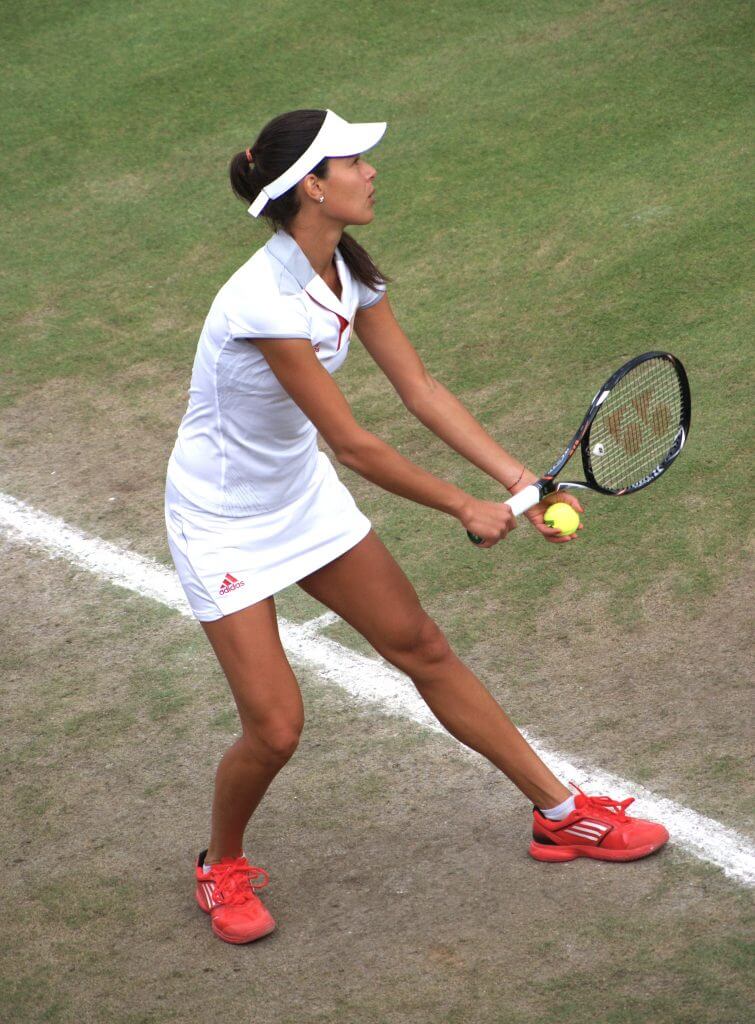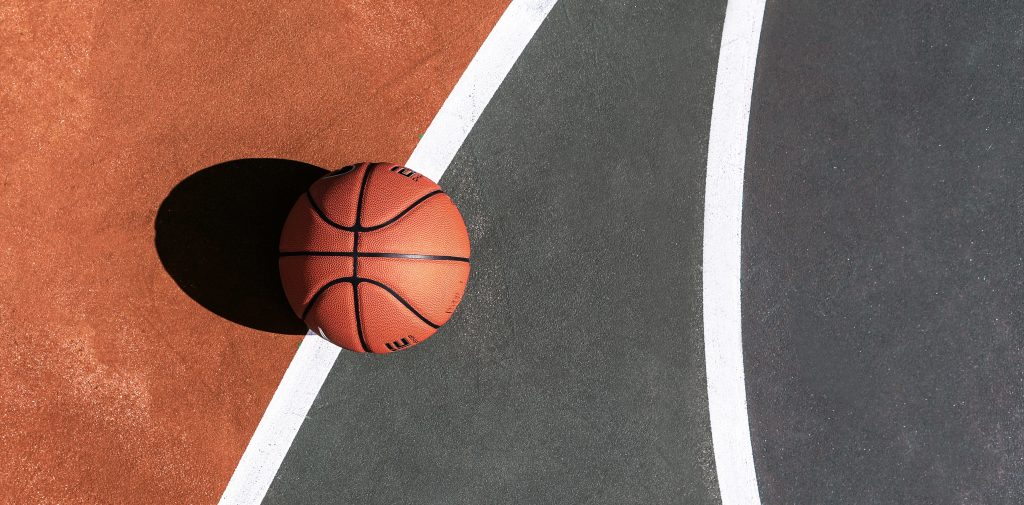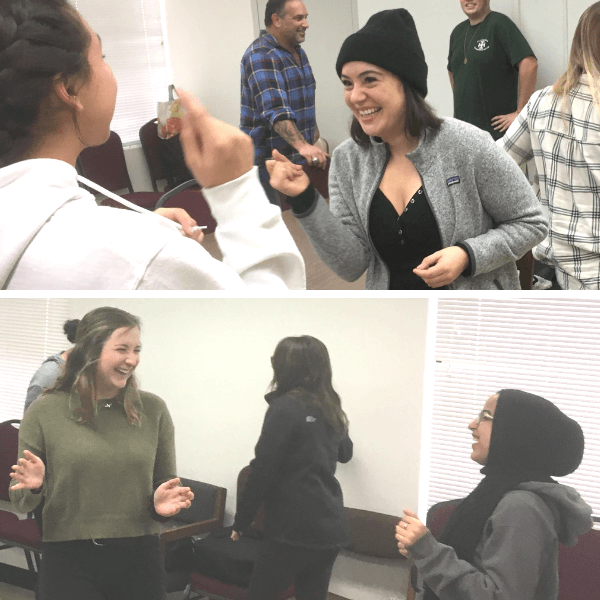“If you’re comfortable you’re not learning… so get comfortable with being uncomfortable.” – George Mumford
Growth mindset is an approach to learning where we embrace the challenge of learning and learn to accept that making mistakes is not only okay, but a crucial part of the learning process.
I teach my Sports Psychology students that pairing mindfulness and growth mindset can help us become aware of the feelings of frustration, stress, or fear and allow us a moment to decide how we’ll work through them in high pressure situations. Just as learning to play a new game or sport involves skills, growth mindset is a skill that can be practiced and learned. When we start learning a new sport, the goal is not to be polished or perfect, but instead to try and try again. Each time we try again, we learn, problem solve, and improve. But what happens when we get so frustrated, stressed out, or scared that we don’t want to try again?
Through mindful activities and games that demonstrate growth mindset, we can learn to feel safe making mistakes. When we give ourselves permission to make mistakes, we empower ourselves to get back in the game.
Putting Your Growth Mindset into Action
The “Wahoo” Game
The goal of this game is to reprogram our responses to making mistakes. In this game, we celebrate our mistakes, rejoice and declare them out loud. Laughing is the point!
First, pick a skill. Select a skill that’s a little challenging–a theatre game, counting game, or silly memory game–something low-stakes that can be played in partners.
Then follow these simple rules. Every time you or your partner make a mistake, together you yell out “Wahoo!” Be sure to open up your chest and look your partner in the eye as you yell “Wahoo.” Try to keep the pace up–often people slow down and try to be perfect.
As you keep going, soon the the room fills with giggles. People realize how hard they’re trying to avoid mistakes and how much fun it is to participate with all the yelling in the room. Encourage everyone by throwing in some Wahoo’s of your own and join the fun.
Afterwards, reflect. What’s our relationship with making mistakes? Was it embarrassing at first to rejoice in your mistake out loud? Did you try to go along with the game and not say when you’d made a mistake? Was it more important, to be cool or to have fun and join in the game? What else did you notice?
In exploring our relationship to mistakes, we can shift away from the self-critical relationship to the mistake to self-compassionate awareness. Rather than being hard on ourselves, we can celebrate our effort and encourage ourselves to keep going and keep working to improve. Can we apply that humor and self-forgiveness to embrace learning any challenging skill? Can we learn to be self-analytical “that was a mistake” while also nurturing our effort “that was hard, I’m going to keep on trying”?
Practicing Growth Mindset, Under Pressure
It’s especially helpful to have a mental routine for a skill that we are likely to execute in high pressure moments–shooting a free throw in basketball or serving in tennis. Typically for a free throw, you might bounce the ball 3 times, look at the basket, visualize your shot swishing through the net as you follow through. We also have quick mental reactions–usually an unexamined internal habit–following an error or mistake. We might look down, shake our heads, or let our shoulders slump as we mutter something judgmental about our crummy shooting mechanics or lazy feet.
Often, high-pressure moments are fraught with many decisions–which corner to aim towards, what speed, topspin or not. This decision fatigue can impact our performance at the most important points in a competition, especially late in a match when the score is close. We can perform better when we limit the number of on-the-spot decisions. Practicing growth mindset can help us with this.
Guiding my students and teams through two activities helps them practice growth mindset for high-pressure moments. We start with the “Big Moment” activity and then try a “Mindful Reset.”
Activity #1: Mindfully Noticing Big Moments
A coach can practice this with a team; a music or drama teacher can practice this before a rehearsal; a classroom teacher can try this during the test-anticipation period. Practicing as a group is quite powerful–perhaps more powerful than one-on-one–because it connects us to each other and the greater human condition. Here is how I guide students through the activity.

We all want to do well in performance situations and we all fear coming up short. What are some of the feelings we have before something important like a test, an important interaction with someone or in a competition? (They may answer: nervous, afraid, wanting to do well, wanting to shine, not wanting to mess up, don’t want to look bad or let the team down.)
Why do we get nervous? Why do we worry? (The subtext of this is “what matters most to us”? They may answer: this is important to us, we work hard, we practice hard, we study hard, it’s the big moment.)
Guiding a Mindful Sit
Today we are going to explore how mindfulness might help with those feelings. We are going to do a short sit. Let’s close our eyes or just look down. Try to visualize or imagine it is right before an important competition, performance, test, or even a challenging conversation.
What are some of those feelings? (Students may default to “thoughts” – encourage them to go deeper into the emotions and body sensations they associate with these thoughts.)
Write them down on the sticky side of the Post-It. (No names; let students write whatever without worrying about being identified.)
Let’s put all the Post-Its in this basket, and we’ll read some aloud.
We all have anxiety about wanting to do well. It is normal to experience these feelings and as we often see from the Post-Its, fellow-students experience similar emotions and sensations. People often try to push away those feelings. In fact we put so much energy into pushing them away that we use up our mental and physical energy. What we can do instead is be mindful of this, and practice a Mindful Reset.
Activity #2: The Mindful Reset: Notice, Allow, Refocus
Prepping for the Mindful Reset. This visualization exercise supports students to practice a skill so they’re more prepared when they encounter high-pressure moments. There are three components:
- Notice. The key to the Mindful Reset is that when you sense some sort of nervousness or anxiety, you stop and notice it. Pause and say to yourself, “Oh, I just had a thought about what happens if we lose the next point.” Where do you feel it in your body? Try to be as specific as possible. “My upper chest feels tight.” You may notice that as you explore, it changes, moves, maybe gets smaller, or lighter.
- Allow. Allow any thoughts that might have crossed your mind. Its ok. Its normal to have those thoughts.
- Refocus. Take a couple of mindful breaths and shift your focus to the body. The feet or another anchor point can be a nice neutral place. Then prepare for the next part of the performance with a feeling of more ease.
Practicing the Mindful Reset. Here is how I guide athletes or other students through the Mindful Reset. If you are talking to a tennis team, they can hold their tennis racquets in their hands. Drama students hold a prop, music students their instruments, test-takers a pencil, etc.
Let your eyes close and sit comfortably. Place your hands on your lap. Ring bell.
Take three slow, deep breaths…normal, natural, calming breaths.
Now try this pace, which we call Square Breaths (Inhale to a count of 4, hold for 4, exhale for 4, hold empty for 4–this is an optional breathing technique).
Notice how your BODY feels. If you feel anxious, nervous or tense notice where you feel that in your body.
Notice your THOUGHTS. Allow your thoughts to be there. If there are nerves, tension, or negative thoughts, it’s ok to have those thoughts, those feelings.
Allow yourself to REFOCUS. Take two Square Breaths, setting your own pace this time.
Now as you slowly breathe in, connect with the inhaling breath; as you breathe out, feel yourself breathing out the tension. Take a second slow in breath and as you breathe out, breathe out the nervousness.
Now, shift your focus to your feet. Feel your left ankle, instep, the soft pad on the bottom of your left foot. Each toe. Shift to right foot. Feel your ankle, instep, the soft pad on the bottom of your foot. Each toe.
Shift your focus to the object you are holding. Feel your fingers gripping it. Imagine yourself using it with ease, going through each motion.
Allow your body and mind to stay connected throughout the entire game (test, performance). Making good decisions. Recovering from mistakes. Resetting. Noticing and allowing thoughts and feelings. Refocusing, checking in with the body and the breath, being in the present moment.
Imagine putting that object down when you’re at half-time. Imagine reviewing your strategy, feeling confident and ready. Imagine playing the entire match (taking the whole test, performing the entire play) like that. Ring bell.
Let’s reflect and discuss. How did that feel? Any questions?
Growth Mindset in My Own Life
Tennis is my sport of choice and last summer I competed at the Paris Gay Games. While my main focus had been to bring home the gold medal in the women’s doubles competition, I also agreed to compete in mixed doubles. I met my doubles partner for the first time in Paris; Alain was from Belgium and we didn’t even get a chance to practice together before our matches! Throughout the tournament, we focused on staying connected in each match, allowing our imperfections, and celebrating the joy of playing on the red clay courts of Paris. In the end we took home the Gold Medal!



